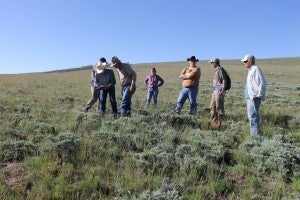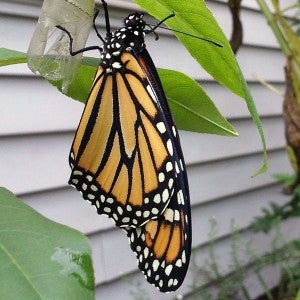Ranchers and conservationists step up to avert listing of sage-grouse

The decision whether or not to list the greater sage-grouse under the Endangered Species Act was one of the biggest listing decisions of our time.
Thanks to unprecedented public-private partnerships among ranchers, energy developers, conservationists and states, we now have the groundwork to guide future management of our nation’s wildlife and working landscapes.
The “not warranted” decision sends a strong signal that investments in conservation are making a difference, providing the catalyst for a new approaches and a different kind of politics.
Bringing the sharing economy to conservation
The reason the greater sage-grouse was not listed as an endangered species is because of major investments made in private working lands, and strong commitments by ranchers to steward their lands for sage-grouse.
So how do we operationalize and scale up this approach?
We draw from the sharing economy to unlock the vast untapped potential of private lands and use market forces to get small improvements on a very large number of acres. I like to think about it as Airbnb for wildlife.
Just as Airbnb allows private homeowners to get paid for opening a spare bedroom to travelers, habitat exchanges allow private landowners such as farmers and ranchers to get paid for providing quality habitat for vulnerable wildlife. The revenue is supplied by infrastructure developers seeking to mitigate the environmental impact of their projects.
“Now is the time for us to come together to change the business of conservation to benefit all.” — Terry Fankhauser, executive vice president of the Colorado Cattlemen’s Association
An example from Colorado
In places like Colorado, energy companies, agriculture leaders and that state worked together to develop the Colorado Habitat Exchange – a program that provides a fast and efficient means of moving mitigation dollars from oil and gas operations to ranchers with the most potential for restoring sagebrush habitat.

“The Colorado Habitat Exchange will create a new market for voluntary conservation that will help protect the greater sage-grouse and sustain Colorado’s robust energy and agriculture economies.” — Colorado Governor John Hickenlooper
The Colorado Habitat Exchange has proven that wildlife conservation does not have to come at the expense of the economy. That in fact, it is just the opposite. Similar efforts to launch habitat exchanges are underway in Wyoming and Nevada.
Up next: the monarch butterfly

Habitat exchanges aren’t just designed to work for sage-grouse. An earlier iteration of the program worked to recover golden-cheeked warblers in Texas and the next version is being adapted for the monarch butterfly.
Once again, the agriculture community will be critical partners in conservation efforts for the butterfly, but we can’t expect them to do it for free. We must continue to develop programs like habitat exchanges that provide the financial incentives, regulatory certainty and management flexibility to attract farmers to the conservation marketplace.
Related links:
With the launching of a new market, he’s a vanguard of grouse conservation in Wyoming >>
Feds call for cooperative conservation on sage grouse, states deliver >>
A cattleman’s quest to save a bird and help ranchers thrive >>












